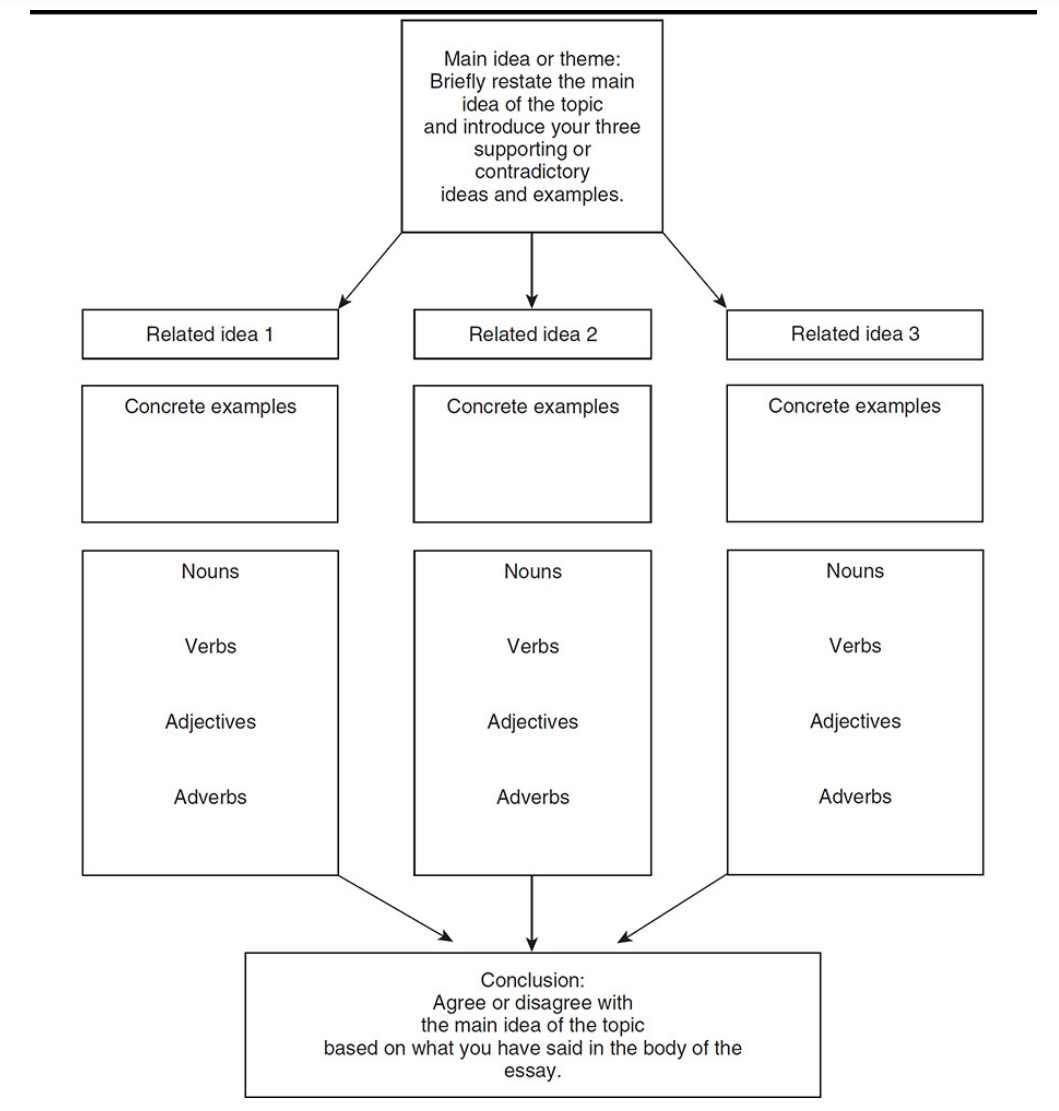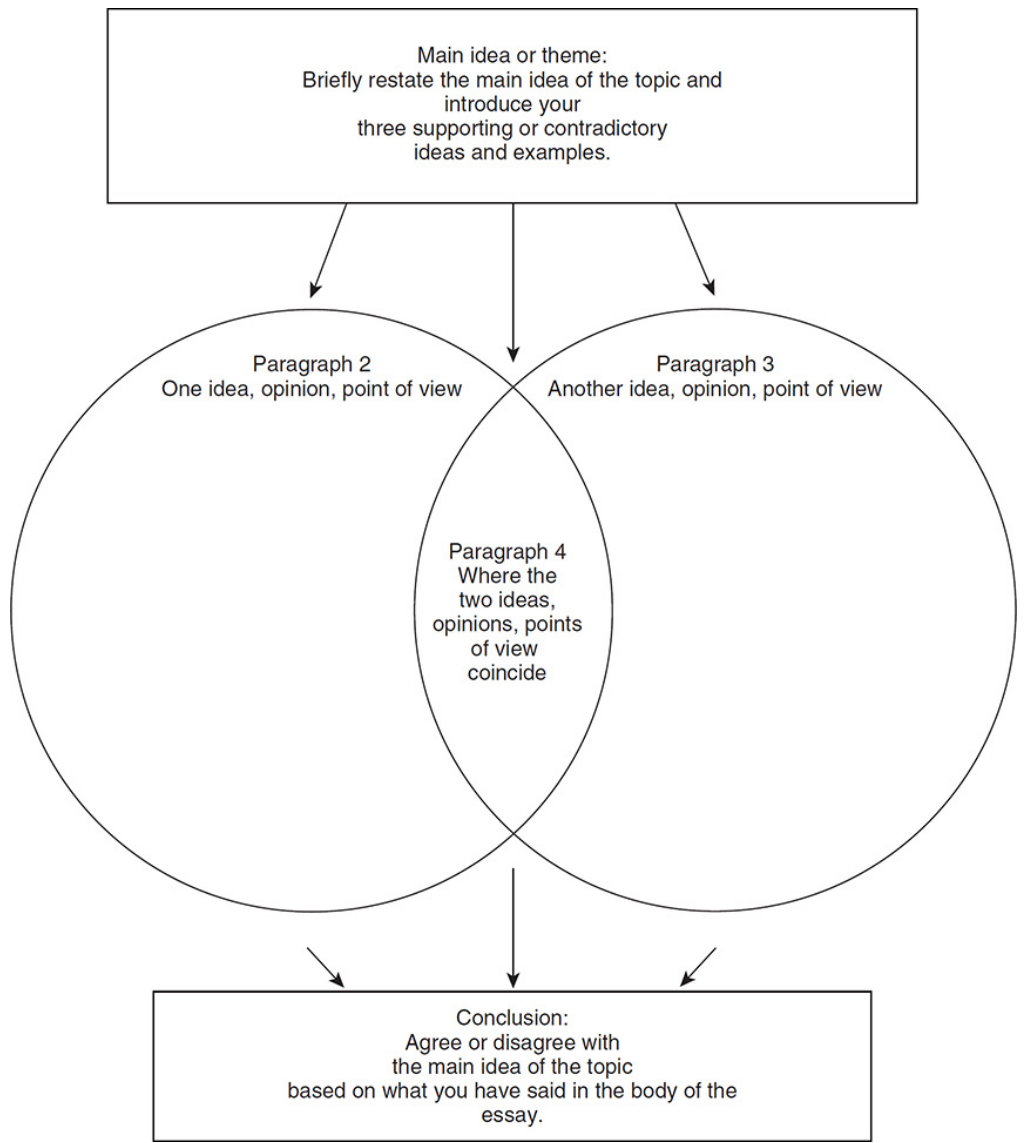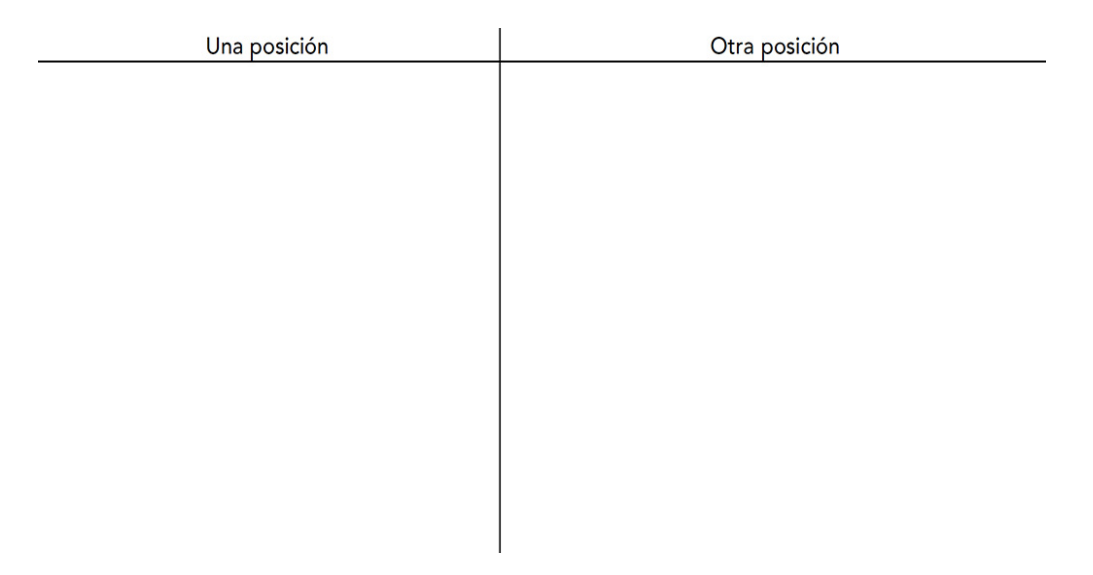Chapter 8: Presentational Writing: Persuasive Essay
Tips for Presentational Writing: Persuasive Essay
- Read the question carefully.
- To organize your thoughts, draw a simple visual organizer like one on the following three pages.
- Use the sources to write two examples for each connected notion.
- List nouns, verbs, adjectives, and adverbs under the instances. But, compose an essay, not a list of responses or thoughts.
- Use all three sorts of sources to gather material for your presentational essay. The first two sources on the exam are reading passages and graphs or tables. Audio will be third.
- Now you are ready to write.
- The introduction should briefly restate the main theme and introduce the three related ideas.
- The fifth and final paragraph should briefly recap the main idea or theme and draw a personal conclusion.
- Answer the question presented using the three sources and citing them appropriately.
- Remember that no new idea should appear in the last paragraph.
- Remember, you must cite and integrate all three sources.
- You must fully and completely address the task.
Different Types of Graphic Organizers
Flowchart

Venn Diagram

The “T” Chart

The Writing Process
- Step 1: Sketch out your ideas using one of the graphic organizers shown on the three preceding pages or another one.
- Step 2: Write your first draft.
- Step 3: Exchange your first draft with two other students. You might wish to give them a copy of the Self-Assessment / Peer Checklist. One student could review the message, and the other could review the mechanics.
- Step 4: Revise your work in light of the suggestions received from your classmates. Look at the spelling and grammar but, most important, look at the message and its clarity. Were your classmates able to understand the message?
- Step 5: Give your second draft to your teacher, tutor, or any person with whom you are working. Have that person critique your work.
- Step 6: Take the comments/suggestions you received and write a final draft, clarifying your ideas, adding any additional details, and eliminating unnecessary or tangential information.
How Your Score Is Determined for Presentational Writing: Persuasive Essay
- The prompt (essay topic) is fully and effectively addressed using relevant details from all three sources to support the answer.
- Shows an excellent understanding of the viewpoints expressed in the sources with very few inaccuracies.
- Student presents and defends own viewpoint with clarity, developing a detailed, persuasive argument.
- The essay is fully comprehensible and shows ease of expression; errors do not affect comprehension.
- The vocabulary is rich, appropriate, and idiomatic.
- Grammar, usage, and syntax (word order) are correct and show variety; there are few errors.
- The essay is well organized and shows good usage of transitional words and cohesive devices.
- The essay contains both simple and compound sentences along with some more complex sentences contained in paragraph-length discourse.
- The prompt (essay topic) is addressed effectively summarizing relevant details from all three sources to support the answer.
- Shows understanding of the viewpoints expressed in the sources with a few inaccuracies.
- Student presents and defends own viewpoint with clarity, developing a coherent, persuasive argument.
- The essay is fully comprehensible even though there may be some errors that do not affect comprehension.
- The vocabulary is varied and mostly appropriate and idiomatic.
- Grammar, usage, and syntax (word order) are generally correct.
- The essay is organized with some use of transitional words and cohesive devices.
- The essay contains both simple and compound sentences along with a few complex sentences contained mostly in paragraph-length discourse.
- The prompt (essay topic) is addressed adequately using a few relevant details from all three sources to support the answer.
- Shows some understanding of the viewpoints expressed in the sources, with some inaccuracies.
- Student presents and defends own viewpoint, developing a somewhat coherent, persuasive argument.
- The essay is generally comprehensible even though there may be some errors that may affect comprehension.
- The vocabulary is adequate and idiomatic.
- Grammar, usage, and syntax (word order) show some control.
- The essay is somewhat organized with limited use of transitional words and cohesive devices.
- The essay contains both simple and a few compound sentences contained mostly in paragraph-length discourse.
- The prompt (essay topic) is not addressed adequately. There are a series of statements, some of which are incorrect, and the essay summarizes information from only one or two of the sources that may not support the answer.
- Shows low degree of understanding of the viewpoints expressed in the sources, with some inaccuracies.
- Student presents own viewpoint but in an unpersuasive and generally incoherent manner.
- The essay is comprehensible in part with errors that affect comprehension and force interpretation.
- The vocabulary is limited.
- Grammar, usage, and syntax (word order) show limited control.
- The essay is not well organized with unsuccessful use of transitional words and cohesive devices.
- The essay contains only simple sentences and/or phrases.
- The prompt (essay topic) is almost not addressed with a repetition of some of the sources or no reference to any of the sources to support the answer.
- Shows poor understanding of the viewpoints expressed in the sources, with many inaccuracies.
- Student minimally presents own viewpoint, but it is undeveloped and incoherent.
- The essay is barely comprehensible with major errors that affect comprehension.
- The vocabulary is very limited.
- Grammar, usage, and syntax (word order) show little control.
- The essay is not organized and lacks use of transitional words and cohesive devices.
- The essay contains only very simple sentences and/or fragments.
Score: 0—This response receives no credit.
- The essay only restates the prompt (essay topic).
- The response is totally off topic.
- The response is not Spanish.
- The page is blank.
- Response says, “I don’t know/understand” in any language.
Check these Flashcards to Strengthen your Vocabulary in Writing/Speaking!
Chapter 9: Interpersonal Speaking: Conversation


